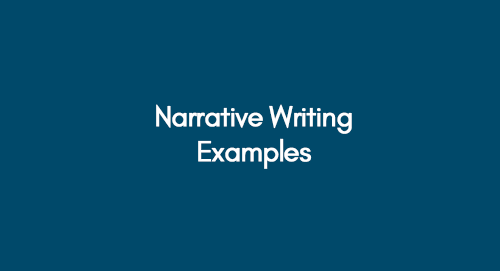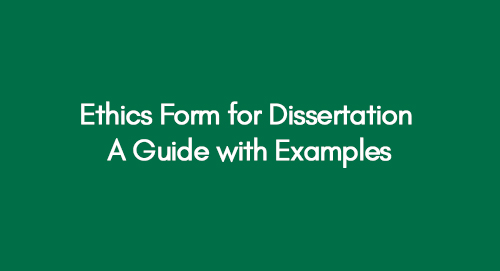
Persuasive Writing Examples
May 25, 2023
Crafting APA Dissertation Format | A Step-by-Step Guide
May 25, 2023Telling a story to the world in your own way is called narrative writing, where words become brushstrokes and emotions dance on the pages. Narrative writing uses to convey a powerful message, evokes emotion, and create a lasting impression.
Review Our Quality Dissertation Examples
Review Our Dissertation Topics Page
It explores complex concepts in a concise and accessible format. Ultimately, narrative writing is an art form that can captivate and engage an audience.
Example 1: Effect of Brand Love on Consumer's Buying Behaviour
Example 2: Impact of Leadership Style on Professional Satisfaction of Nurses: A Case Study
Note: Below is a complete guide with some more examples and tips for you to ace the skill of narrative writing.
Types of Narrative Essay Writing
There are many different types of narrative essay writing, but some of the most common include:
- Personal essays: These essays tell a story from your own life. You can be about anything, from a childhood memory to a recent experience. Additionally, you can say that people love to write and tell the world.
- Memoir: This type of narrative essay is similar to a personal essay, but it is usually longer and more detailed. Memoirs often tell the story of a significant event or period in the writer's life.
- Fictional narrative: This type of narrative essay is a work of fiction. It tells a story that is not based on your own life. It is actually writing the story that can be scripted or enacted on stage, or it can be anything that captures the audience's attention with a brilliant visual or auditory presentation.
- Creative nonfiction: Truth meets storytelling. It blends facts that deliver real-life stories in engaging and compelling ways. A genre that explores personal experiences, historical events, and social issues, enlightening readers through the power of narrative. Factually grounded, creatively crafted, and a captivating glimpse into reality.
Get Some Help in Your Thesis Writing with Our Services
No matter what type of narrative essay you are writing, there are some key elements that all good narrative essays share. These elements include:
- A clear and concise plot: The plot is the sequence of events in the story. It should be easy to follow and should have a clear beginning, middle, and end.
- Well-developed characters: The characters in the story should be believable and should have their own unique personalities.
- Vivid description: The writer should use vivid language to describe the setting, characters, and events in the story.
- Theme: The story should have a theme or central message. The theme should be clear to the reader and supported by the story's events.
What can be more exciting than sharing your stories and experiences with others? If you are interested in writing a narrative essay, be sure to choose a topic you are passionate about and have something to say about.
Narrative Writing Format and Structure
The narrative writing format is important to tell any story. Because any good structure of writing can easily engage the reader and create lasting memories. With our experience, we share an effective format that can guide you in your essay or fictional writing.
Introduction
Start with a captivating opening that hooks the reader's attention and introduces the main characters, setting, and central conflict or event. In this section, you set the stage for your whole essay or write-up.
Explore Interesting Ways to Write Introduction
Plot Development
Develop the story by presenting a series of events that unfold logically and build tension. Include rising action, where the conflict or problem intensifies, leading to a climax, the highest point of dramatic tension.
Characterisation
The most interesting part of writing in the narrative is to set the characters and their role. Next is to bring your characters to life by describing their appearance, personality, thoughts, and actions. Show their growth and development throughout the story.
Setting
The most important part is the setting because you are giving idea to your reader the scenario of the scene with words. Create a vivid sense of place and time. Describe the physical environment, atmosphere, and details that help immerse the reader in the story.
Dialogue
Use dialogue to reveal the characters' thoughts, emotions, and interactions. Make it realistic and purposeful, advancing the plot or providing insight into the characters' motivations.
Descriptive Language
Employ sensory details and figurative language to engage the reader's senses and evoke emotions. Paint a vivid picture of the scenes, characters, and events.
Conflict and Resolution
Present the main conflict or problem the characters face, and show how they navigate challenges. Build towards a resolution or conclusion that provides closure and satisfies the reader.
Conclusion:
End the story in a satisfying manner, reflecting on the outcome and leaving a lasting impression. Tie up loose ends, offer insights, or leave the reader with a thought-provoking ending.
Remember that the specific format and structure may vary depending on the type of narrative writing, such as short stories, novels, memoirs, or personal essays. Adapt and adjust these elements to suit your storytelling goals and creative vision.
Narrative Writing Example
Self-discovery, overcoming adversity, or unravelling a mystery—narratives weave tales that captivate and enlighten readers. Here is a narrative essay to give you an idea of the character and scene.
Sarah & Shadows of Dreams
“The wind howled through the desolate streets as Sarah hurried along, clutching her coat tighter. She had never felt more alone. Memories of happier times played like a slideshow in her mind, contrasting sharply with the emptiness surrounding her.
Lost in her thoughts, Sarah barely noticed the stranger approaching. He had a weathered face and kind eyes, his voice carrying a hint of wisdom. He spoke of a hidden treasure buried beneath an ancient oak tree in the nearby forest. Intrigued and desperate for a change, Sarah decided to embark on this unexpected adventure.
With a backpack filled with provisions and a heart heavy with anticipation, she delved into the wilderness. The journey was arduous, with obstacles lurking at every turn. Yet, Sarah's determination and newfound courage pushed her forward.
Along the way, she encountered a peculiar assortment of characters—a wise old owl, a mischievous fox, and a gentle stream whispering secrets. Each encounter provided valuable lessons and clues that guided her closer to the treasure she sought.
Finally, after days of relentless pursuit, Sarah stood before the towering oak tree. Its branches reached towards the heavens as if guarding the secret beneath its roots. With trembling hands, she dug into the earth, unearthing a small, worn chest. Inside, a letter revealed the true treasure—a reminder of her own strength and resilience.
Returning home, Sarah carried the weight of her experiences and the newfound belief in her own abilities. The journey had transformed her, instilling a sense of purpose and a deeper understanding of her own story.
As she walked through the familiar streets, the wind no longer felt cold or desolate. Instead, it whispered promises of new beginnings and endless possibilities. Sarah smiled, ready to embrace the next chapter of her life with renewed hope and a heart full of adventure.”
Final Thought
Through the artful crafting of stories, we unlock the profound ability to touch hearts, ignite imaginations, and connect with the essence of being human. Don't underestimate the power of narrative writing, for within its realm lies the infinite capacity to inspire, empower, and create lasting impact through the written word.
Get 3+ Free Dissertation Topics within 24 hours?


























